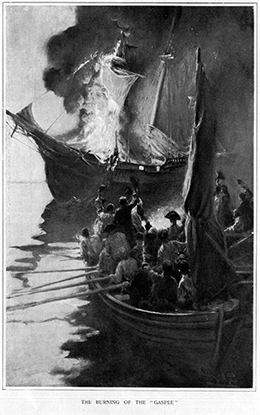| << Chapter < Page | Chapter >> Page > |
The Tea Act of 1773 triggered a reaction with far more significant consequences than either the 1765 Stamp Act or the 1767 Townshend Acts. Colonists who had joined in protest against those earlier acts renewed their efforts in 1773. They understood that Parliament had again asserted its right to impose taxes without representation, and they feared the Tea Act was designed to seduce them into conceding this important principle by lowering the price of tea to the point that colonists might abandon their scruples. They also deeply resented the East India Company’s monopoly on the sale of tea in the American colonies; this resentment sprang from the knowledge that some members of Parliament had invested heavily in the company.
Even after the partial repeal of the Townshend duties, however, suspicion of Parliament’s intentions remained high. This was especially true in port cities like Boston and New York, where British customs agents were a daily irritant and reminder of British power. In public houses and squares, people met and discussed politics. Philosopher John Locke’s Two Treatises of Government , published almost a century earlier, influenced political thought about the role of government to protect life, liberty, and property. The Sons of Liberty issued propaganda ensuring that colonists remained aware when Parliament overreached itself.
Violence continued to break out on occasion, as in 1772, when Rhode Island colonists boarded and burned the British revenue ship Gaspée in Narragansett Bay ( [link] ). Colonists had attacked or burned British customs ships in the past, but after the Gaspée Affair, the British government convened a Royal Commission of Inquiry. This Commission had the authority to remove the colonists, who were charged with treason, to Great Britain for trial. Some colonial protestors saw this new ability as another example of the overreach of British power.

Samuel Adams, along with Joseph Warren and James Otis, re-formed the Boston Committee of Correspondence , which functioned as a form of shadow government, to address the fear of British overreach. Soon towns all over Massachusetts had formed their own committees, and many other colonies followed suit. These committees, which had between seven and eight thousand members in all, identified enemies of the movement and communicated the news of the day. Sometimes they provided a version of events that differed from royal interpretations, and slowly, the committees began to supplant royal governments as sources of information. They later formed the backbone of communication among the colonies in the rebellion against the Tea Act, and eventually in the revolt against the British crown.

Notification Switch
Would you like to follow the 'U.s. history' conversation and receive update notifications?